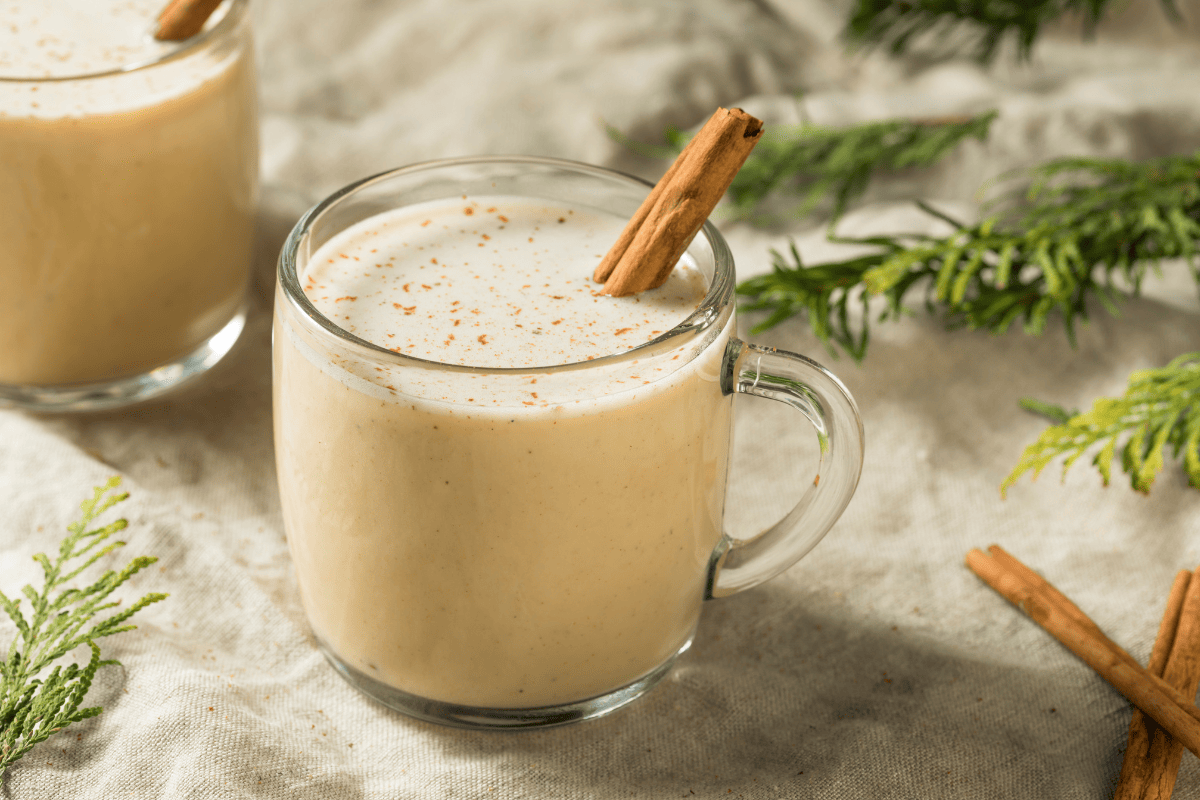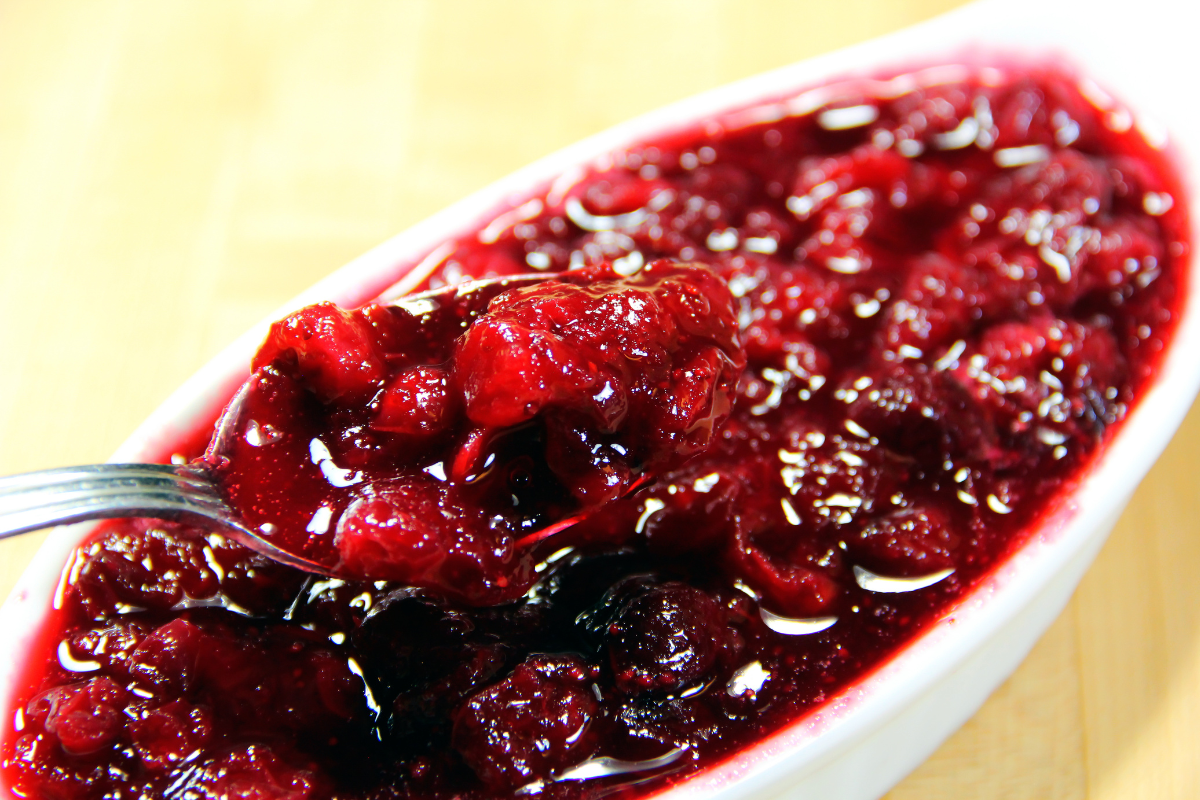
Ah, eggnog: you either love it or you hate it. It is sweet, spiced, creamy, and, well, eggy. For many, the holiday season isn’t complete without a chilled glass of this unusual concoction. We certainly don’t mind a sip or two, especially when spiked with aged cachaca. Keep reading for a little eggnog trivia and our spiked eggnog recipe (or just jump to the recipe, you won’t hurt our feelings).
Where Does Eggnog Come From?
Most historians agree that the roots of eggnog can be traced back to medieval Britain, where a beverage known as “posset” was popular. Posset was made with milk curdled with wine or beer and often flavored with spices. It was meant to be drunk hot and often used as a treatment for cold and flu.
Eggs and egg yolks were incorporated into posset by at least the 13th century. Monks were known to consume a version that included both eggs, wine, and figs. The wealthy elite adopted this custom and added a bit of sherry, which was more expensive at the time. Posset soon became a symbol of good health and prosperity.
Posset was not called “eggnog” until the 17th century, when the drink made its way to the American Colonies. Sherry and wine were exchanged for rum, which was plentiful and cheap. Heaps of sugar were also added to the already-rich drink. George Washington himself had a recipe for eggnog that called for “one dozen tablespoons of sugar.” That might explain the unfortunate teeth situation. The first president’s recipe also had rum, rye whiskey, and sherry. Small wonder he forgot to specify how many eggs to use.
Why is Eggnog Called Eggnog?
The egg part is obvious, but where did the “nog” come from in eggnog? We’ll never know for sure, but many historians posit (that’s a pun) that the term comes from “noggin,” a Gaelic word for a wooden cup.
Why Do We Drink Eggnog at Christmas?
From its early iterations as posset to the time it was drunk in the colonies, eggnog ingredients were considered a luxury. It was thought that toasting a beverage with expensive eggs, cream, sugar, alcohol, and spices would usher in prosperity for the new year. Eggnog is also high in calories, which may have been beneficial to those with otherwise meager holiday rations.
Today, eggnog is less about prosperity and more about festivity. We tend to give ourselves a pass at Christmas to indulge a bit, and eggnog fits the bill: it is creamy, decadent, and a little bit naughty with all those calories.
Do Brazilians Drink Eggnog?
Yes! Eggnog is called “licor de ovos” in Brazil and is made in much the same way as American eggnog. The main difference is the liquor. Brazilians, of course, use cachaca in their eggnog in place of rum. Nutmeg is also not typically used in licor de ovo, which is flavored with pure vanilla extract instead.
Licor de ovo is especially popular in Minas Gerais and other southern regions of Brazil, where it can get quite chilly in the Autumn and Winter months. This means it is not necessarily consumed as a holiday beverage, since Brazilian autumn begins in March.
What is In Eggnog?
Eggs: the star ingredient, eggs provide the rich and velvety texture to eggnog. Raw eggs were historically used, but most modern recipes heat the eggs to a safe temperature before chilling.
Dairy: whole milk and heavy cream contribute to the luscious creaminess of eggnog. Some recipes may use a combination of milk and cream to balance the richness.
Sweeteners: sugar is a crucial component to sweeten the eggnog, providing a counterbalance to the richness of the eggs and dairy. Some variations might also include sweetened condensed milk or even maple syrup.
Flavorings: nutmeg is the traditional spice that gives eggnog its distinctive flavor. Other spices like cinnamon, vanilla, and cloves may also be added for complexity.
Spirits: the addition of alcoholic spirits, such as rum, cachaca, brandy, whiskey, or bourbon, is optional but adds warmth and depth to the flavor profile. Non-alcoholic versions are also popular, ensuring that everyone can enjoy this festive beverage.
What Does Eggnog Taste Like?
Eggnog is a harmonious blend of sweet, creamy, and warmly spiced flavors. The texture is velvety and thick, almost syrupy but not sticky. It is not dissimilar to a glass of melted ice cream spiced heavily with nutmeg, which gives it a distinctly peppery flavor.
Homemade Eggnog Recipe (Licor de Ovos)
Ingredients:
6 egg yolks
½ cup white sugar
2 cups whole milk
1 cup heavy whipping cream
½ tsp freshly ground nutmeg
¼ tsp ground cinnamon
¼ tsp ground cloves
1/4 tsp ground cardamom
½ tsp pure vanilla extract
Pinch of salt
4 oz aged cachaca or spiced rum
Directions:
- Whisk together the egg yolks, then add the sugar and mix until light and frothy.
- Heat the milk, cream, cinnamon, cloves, nutmeg, and salt in a saucepan over medium high heat.
- Temper the egg mixture: when the cream mixture reaches a simmer, add about 2 tablespoons to the egg mixture and stir to combine. Repeat this process until most of the cream mixture has been added to the egg mixture, then return everything to the saucepan.
- Whisk constantly over medium high heat for a few more minutes. Check the temperature with a thermometer: it should be 160 degrees fahrenheit or higher.
- Remove the mixture from the heat and add your vanilla extract and cachaca.
- Chill thoroughly, then serve in glass cups with a cinnamon stick and freshly grated nutmeg.
Spend the Holidays with Us
Texas de Brazil is a unique and delicious fine dining destination during the holidays and all year round. Visit one of our 50+ locations this year to treat your loved ones to a truly special meal. Also, be sure to take advantage of our current Texas de Brazil gift card deals–perfect to add to a stocking or a christmas gift basket.


